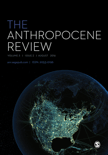
Anthropocene Review
Scope & Guideline
Pioneering Research for a Sustainable Future
Introduction
Aims and Scopes
- Interdisciplinary Research:
The journal encourages interdisciplinary collaborations that span ecology, sociology, anthropology, economics, and political science, reflecting the diverse impacts of human activity on the Earth. - Critical Examination of Anthropocene Concepts:
It focuses on critically analyzing and redefining concepts related to the Anthropocene, such as climate change, sustainability, and ecological restoration, often challenging established narratives. - Socio-ecological Perspectives:
The journal emphasizes the relationship between social systems and ecological processes, exploring how human societies adapt to and shape their environments. - Policy and Governance Insights:
Research published often delves into the implications of environmental policies and governance frameworks in managing ecological crises and promoting sustainable development. - Cultural and Ethical Dimensions:
It highlights the cultural, ethical, and philosophical implications of the Anthropocene, examining how narratives and values influence human-environment interactions.
Trending and Emerging
- Climate Justice and Equity:
Recent publications increasingly address the intersection of climate change with social justice, focusing on how marginalized communities are disproportionately affected by environmental degradation. - Posthumanism and Non-Human Agency:
There is a growing interest in posthumanist perspectives that explore the agency of non-human entities and their roles in ecological systems, challenging anthropocentric viewpoints. - Indigenous Knowledge and Practices:
The incorporation of Indigenous knowledge systems and practices in understanding and addressing Anthropocene challenges is gaining traction, reflecting a broader recognition of diverse epistemologies. - Technological Impacts on Society and Environment:
Emerging themes explore the implications of new technologies, such as AI and biotechnologies, on environmental sustainability and societal structures, emphasizing the need for critical assessments. - Narratives of Hope and Resilience:
A shift towards narratives that emphasize resilience, adaptation, and hopeful futures in the face of environmental crises is becoming more prominent, promoting constructive dialogues around sustainability.
Declining or Waning
- Historical Analysis of Past Epochs:
While historical perspectives on environmental changes have been important, there seems to be a decline in papers solely focused on historical analyses of ecological conditions prior to the Anthropocene. - Purely Technical Solutions to Environmental Issues:
There appears to be a waning focus on purely technical fixes for environmental problems, such as geoengineering, in favor of more holistic approaches that consider social and ethical dimensions. - Descriptive Studies of Ecosystems:
Research that primarily describes ecosystems without integrating socio-political contexts or human influences is becoming less common, as the journal shifts towards more integrative and critical frameworks. - Narrowly Defined Environmental Issues:
Topics that isolate specific environmental issues without connecting them to broader societal impacts or Anthropocene narratives are less frequently published, indicating a preference for comprehensive analyses.
Similar Journals
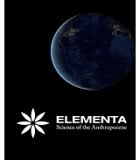
Elementa-Science of the Anthropocene
Pioneering open-access solutions for pressing environmental challenges.Elementa: Science of the Anthropocene is an esteemed Open Access journal published by University of California Press, dedicated to advancing interdisciplinary research that addresses the complexities of the Anthropocene epoch. Since its inception in 2013, it has established itself as a leading platform for the dissemination of innovative ideas across several disciplines, including atmospheric science, ecology, environmental engineering, geology, geotechnical engineering, and oceanography, achieving Q1 status in each of these fields as of 2023. With an impact factor reflecting its significant contribution to the scholarly community, Elementa ranks favorably in various Scopus categories, being placed in the 88th percentile in Earth and Planetary Sciences for both Geology and Oceanography. The journal's open-access model ensures that valuable research findings are accessible to a broader audience, fostering collaboration among researchers, professionals, and students dedicated to tackling pressing environmental challenges. Located in Oakland, California, Elementa continues to uphold a mission that underscores the importance of sustainable solutions and comprehensive understanding of the Anthropocene.

Geosciences
Empowering Researchers to Share Transformative Findings.Geosciences is a prestigious open-access journal published by MDPI, dedicated to advancing research in the field of Earth and Planetary Sciences. Since its inception in 2011, this journal has fostered a collaborative environment for the dissemination of innovative ideas and findings, contributing significantly to the academic community's understanding of complex geological processes. The journal has achieved a commendable 2023 ranking in the second quartile (Q2) within its category, highlighting its impact and relevance in the field, with a Scopus rank of #41 out of 195 journals, placing it in the 79th percentile. With an aim to span a broad range of topics from environmental geology to planetary exploration, Geosciences is pivotal for researchers, professionals, and students looking for an accessible platform to share their work and stay informed of the latest developments. As a fully open-access journal, it ensures that high-quality research is freely available, fostering greater dissemination of knowledge across the globe.

Earth Interactions
Advancing Knowledge of Planetary Interactions and DynamicsEarth Interactions is a prominent journal that serves as a critical platform for interdisciplinary research in the field of Earth and Planetary Sciences. Published by the American Meteorological Society, this journal has established itself as a key resource for scholars, researchers, and professionals dedicated to understanding Earth's complex systems and their interactions. With an impressive Q1 ranking in the category of Earth and Planetary Sciences for 2023, it reflects a commitment to high-quality scholarship and impactful contributions to the field. The journal, with its dedicated coverage from 2004 to 2024, encompasses a wide array of topics, providing comprehensive insights into geological, atmospheric, and environmental phenomena. Although it operates under a non-open access model, its significance is underscored by its placement in the top percentile of Scopus rankings (Rank #89/195), making it an exciting resource for those pursuing advanced studies and applications related to Earth's systems.

Neotropical Biodiversity
Advancing knowledge for a thriving Neotropical future.Neotropical Biodiversity is a prominent journal dedicated to advancing our understanding of biodiversity and ecological dynamics within the Neotropical region. Published by TAYLOR & FRANCIS LTD in the United Kingdom, this Open Access journal has been providing unrestricted access to research findings since 2015, fostering collaboration and knowledge sharing among the global scientific community. With an emphasis on innovative research in Ecology, Ecology, Evolution, Behavior and Systematics, and Global and Planetary Change, it has earned a reputation for excellence, currently holding a Q3 category in its field. As of 2023, the journal ranks in the 37th percentile for Environmental Science (Ecology) and in the 36th percentile for Agricultural and Biological Sciences (Ecology, Evolution, Behavior and Systematics), making it a valuable resource for researchers, professionals, and students interested in understanding and preserving biodiversity in one of the world's most diverse ecosystems. We invite you to explore the cutting-edge research published in Neotropical Biodiversity and contribute to the ongoing dialogue for environmental sustainability and ecological resilience.
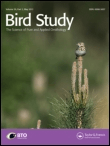
BIRD STUDY
Bridging the gap between science and avian conservation efforts.BIRD STUDY, an esteemed journal published by Taylor & Francis Ltd, stands at the forefront of avian research, contributing significantly to the fields of ecology, evolution, behavior, and conservation. With its ISSN 0006-3657 and E-ISSN 1944-6705, this journal has been a cornerstone of ornithological studies since its inception in 1954 and continues to provide a critical platform for the dissemination of knowledge through 2024 and beyond. It holds a respectable Q3 quartile ranking in both Ecology, Evolution, Behavior and Systematics and Nature and Landscape Conservation, reflecting its pivotal role in the academic community. While the journal is not open access, it continues to attract submissions from a diverse array of researchers and professionals eager to share their findings on the intricate and dynamic interactions of birds within their ecosystems. As the global focus on biodiversity and conservation intensifies, BIRD STUDY remains dedicated to fostering knowledge and encouraging evidence-based practices that aim to protect avian species and their habitats.
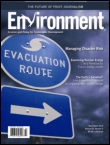
ENVIRONMENT
Connecting Scholars and Solutions in Environmental StudiesENVIRONMENT is a premier journal published by Routledge Journals, Taylor & Francis Ltd, focusing on interdisciplinary studies in the field of environmental science. With the ISSN 0013-9157 and E-ISSN 1939-9154, this journal serves as a vital platform for the dissemination of high-quality research and innovative ideas that address contemporary environmental challenges. Spanning over five decades since its inception in 1969, the journal boasts an impressive impact factor and is recognized in multiple prestigious categories: Q1 in Environmental Engineering and Water Science and Technology, as well as Q2 rankings in Global and Planetary Change and Renewable Energy, Sustainability, and the Environment. Covering a diverse scope from ecological studies to sustainable technologies, it attracts a global readership comprised of researchers, professionals, and students committed to driving progress in environmental sustainability. Although currently not an open-access journal, it offers essential insights and empirical findings crucial for policy development and practical applications in the world of environmental science. The journal not only contributes to scholarly discourse but also plays a significant role in shaping future research directions and fostering a deeper understanding of the intricate relationships between humans and their environment.
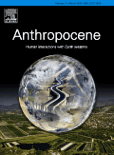
Anthropocene
Bridging Disciplines to Tackle Ecological IssuesAnthropocene, published by Elsevier Science Ltd, is a leading journal dedicated to the interdisciplinary study of the Anthropocene epoch, focusing on the profound impacts of human activity on Earth systems and ecosystems. With an impressive impact factor reflected in its Q1 rankings in Earth and Planetary Sciences and Ecology, as well as a solid standing in Global and Planetary Change, this journal is a vital resource for researchers, professionals, and students striving to understand and address the pressing environmental challenges of our time. Since its inception in 2013, the journal has been committed to publishing high-quality, peer-reviewed articles that stimulate critical discourse and inspire innovative solutions to complex ecological issues. Although not an open-access journal, Anthropocene provides extensive access options through institutional subscriptions, making its significant research readily available to the academic community. Based in the United Kingdom, the journal serves as a cornerstone for scholarship in a rapidly evolving field, bridging gaps across disciplines and encouraging interdisciplinary collaboration for a sustainable future.

Global Ecology and Conservation
Leading the way in ecology and conservation science.Global Ecology and Conservation, published by Elsevier, stands as a premier open-access journal dedicated to advancing the field of ecology and conservation science. Since its inception in 2014, the journal has facilitated the dissemination of high-quality research, fostering critical dialogue on ecosystem management, biodiversity preservation, and sustainability practices across the globe. With a remarkable ranking within the top quartiles (Q1) in various categories including Ecology, Evolution, Behavior and Systematics, and Nature and Landscape Conservation, it is positioned among the leading resources for researchers and professionals alike. The journal has garnered a notable impact, ranking #65 out of 721 in Ecology, and houses articles that are vital to understanding and addressing the pressing environmental challenges of our time. Available in an open-access format, researchers can freely access and share vital findings, promoting a collaborative approach to ecological research. Global Ecology and Conservation is not just a publication; it is a critical tool for innovation and advocacy in conservation, poised to inspire the next generation of environmental stewards.

One Earth
Championing impactful research for our shared planet.One Earth is a premier academic journal published by Cell Press, dedicated to advancing research in the fields of Earth and Planetary Sciences as well as Environmental Science. With an impactful presence in the academic community and an impressive ranking, One Earth has achieved Q1 status in both Earth and Planetary Sciences and Environmental Science, showing its commitment to the highest standards of scholarly excellence. Founded in 2019, this journal has quickly established itself as a leading platform for groundbreaking research, contributing to the global conversation on sustainability and environmental stewardship. With a distinguished Scopus rank placing it in the 99th percentile among Earth and Planetary Sciences and the 97th percentile in General Environmental Science categories, One Earth aims to disseminate cutting-edge findings and foster innovative approaches to address pressing global challenges. The journal is indexed with an ISSN of 2590-3330 and an E-ISSN of 2590-3322, supporting a broad audience of researchers, professionals, and students passionate about ecological integrity and planetary health.
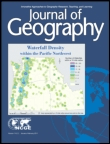
JOURNAL OF GEOGRAPHY
Advancing Geographic Knowledge Since 1902JOURNAL OF GEOGRAPHY is a premier academic publication dedicated to advancing knowledge in the fields of geography, planning, and education. Published by TAYLOR & FRANCIS INC in the United Kingdom, this journal boasts an impressive history since its inception in 1902 and is recognized for its commitment to scholarly excellence, as evidenced by its Q1 ranking in Earth-Surface Processes, Education, and Geography, Planning and Development categories for 2023. With Scopus rankings placing it in the top tiers of its respective fields, researchers and professionals are encouraged to engage with cutting-edge research that explores the complexities of spatial relationships and environmental processes. While the journal does not currently offer Open Access options, it serves as an essential resource for academics looking to contribute to the dialogue on pressing geographic issues. Located at 530 Walnut Street, Ste 850, Philadelphia, PA 19106, the JOURNAL OF GEOGRAPHY is devoted to fostering an understanding of the dynamic interactions shaping our world, making it a vital platform for those dedicated to geographic inquiry.